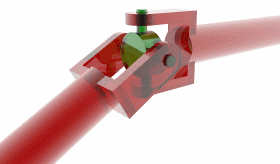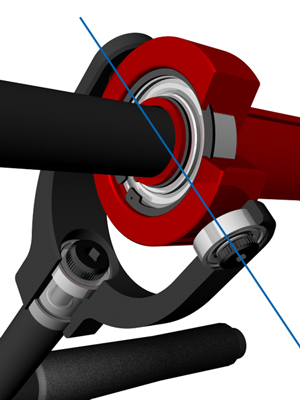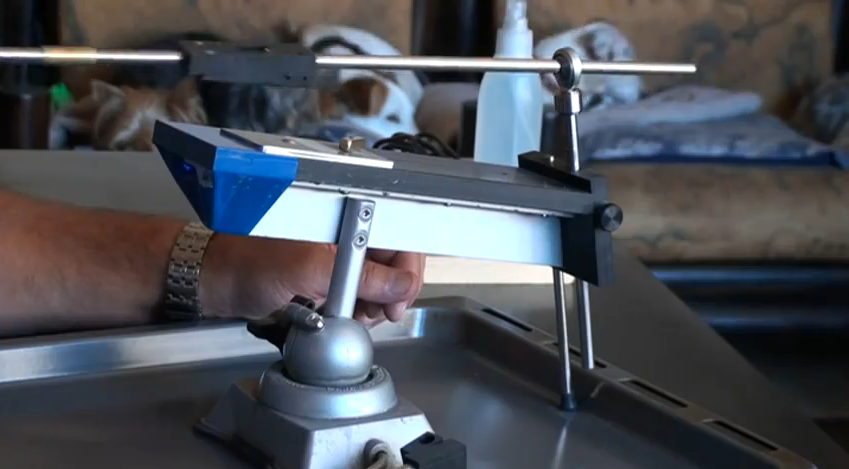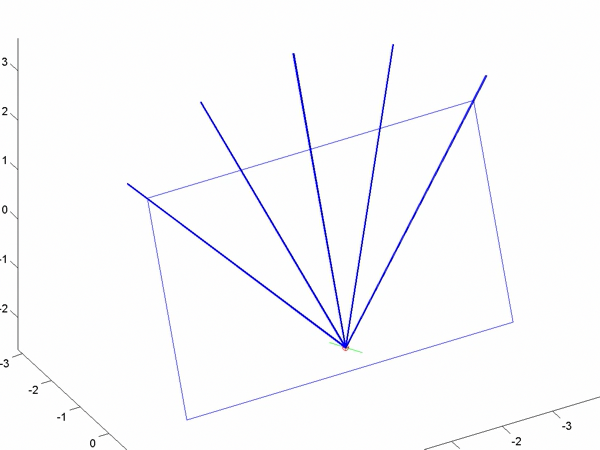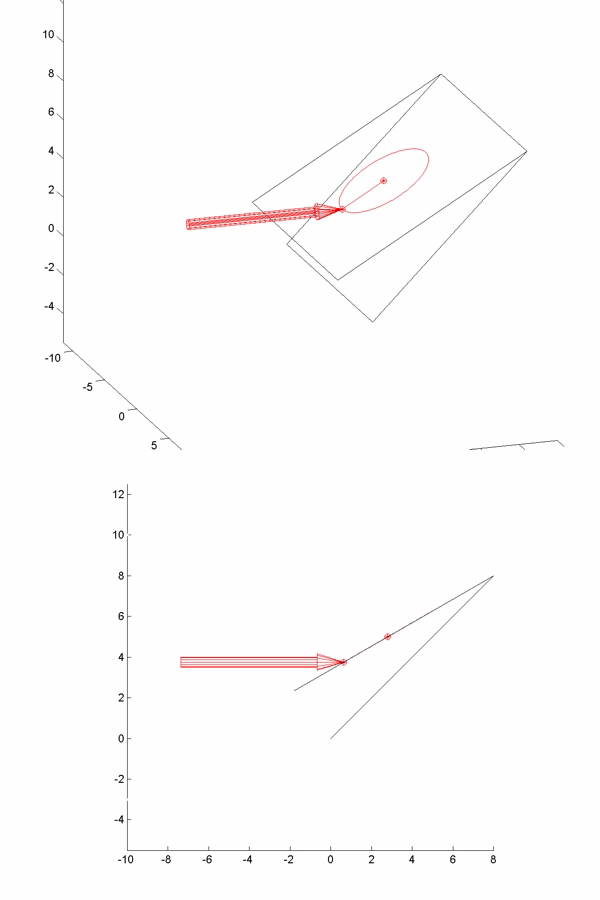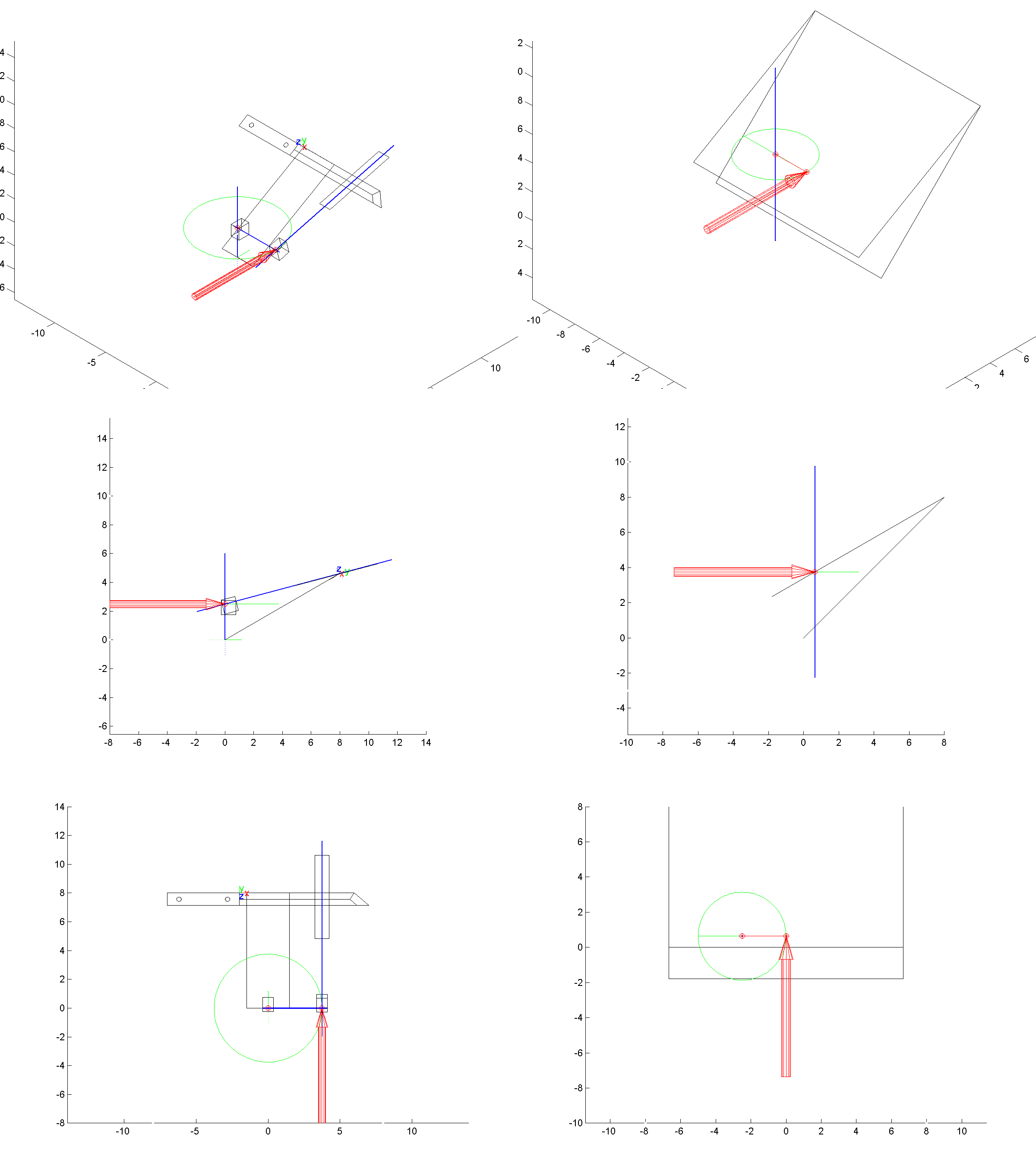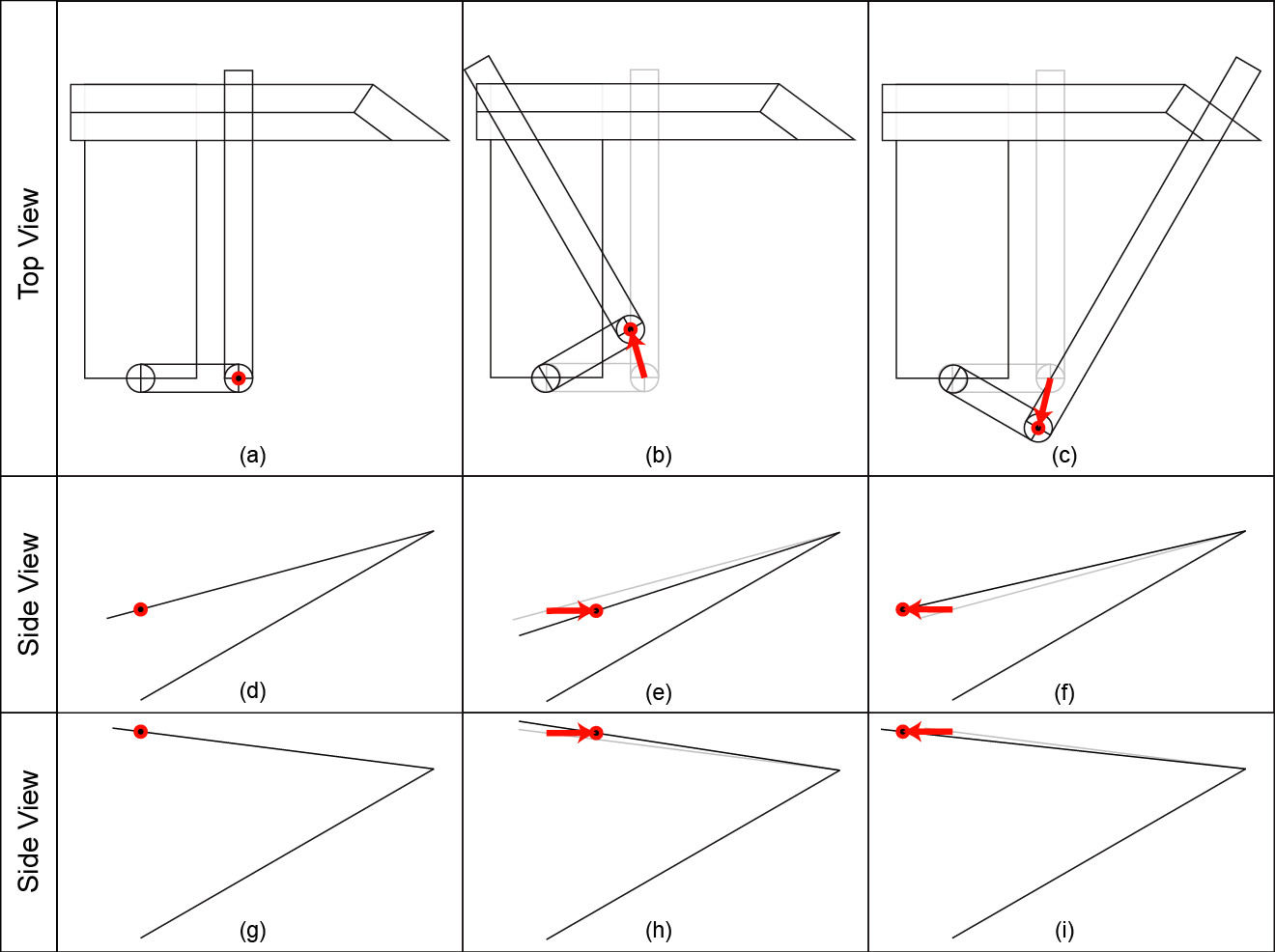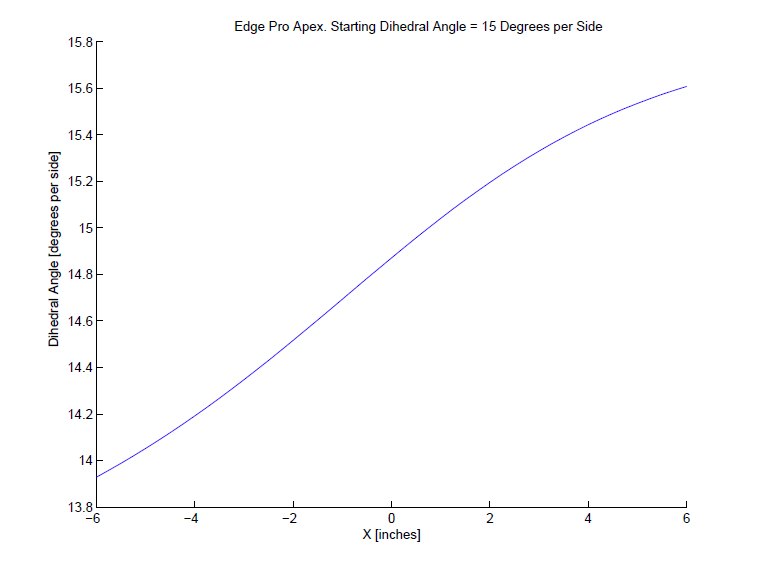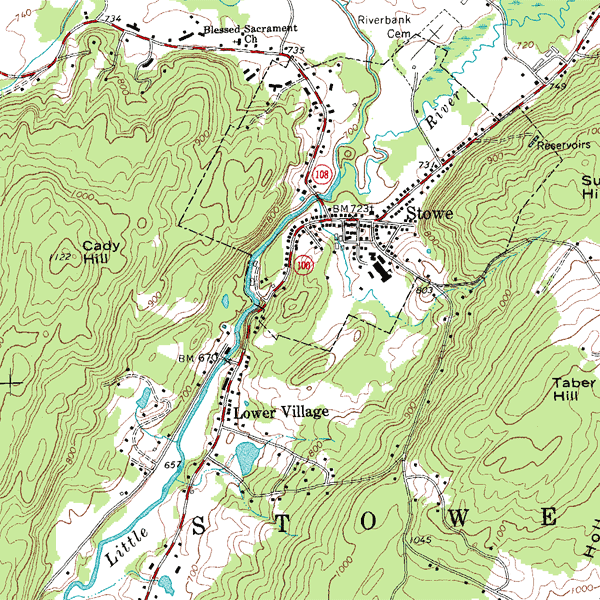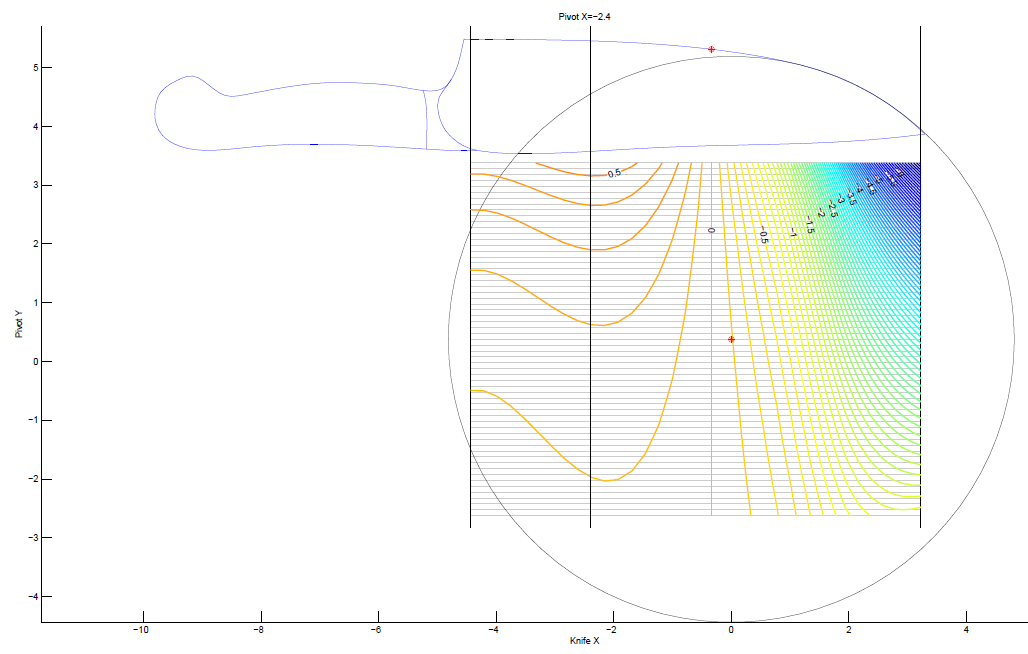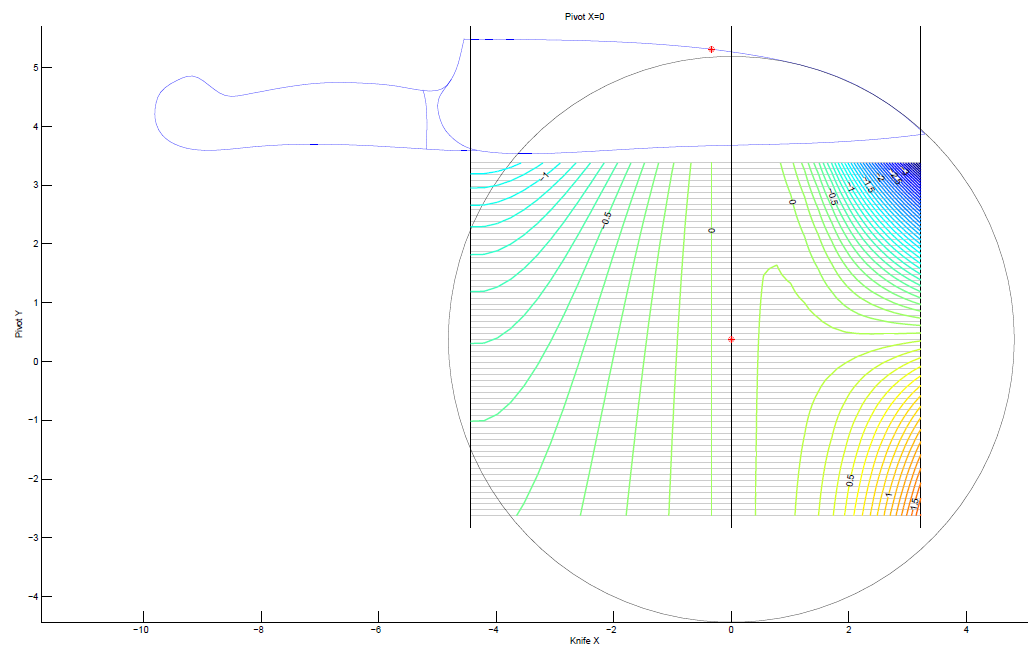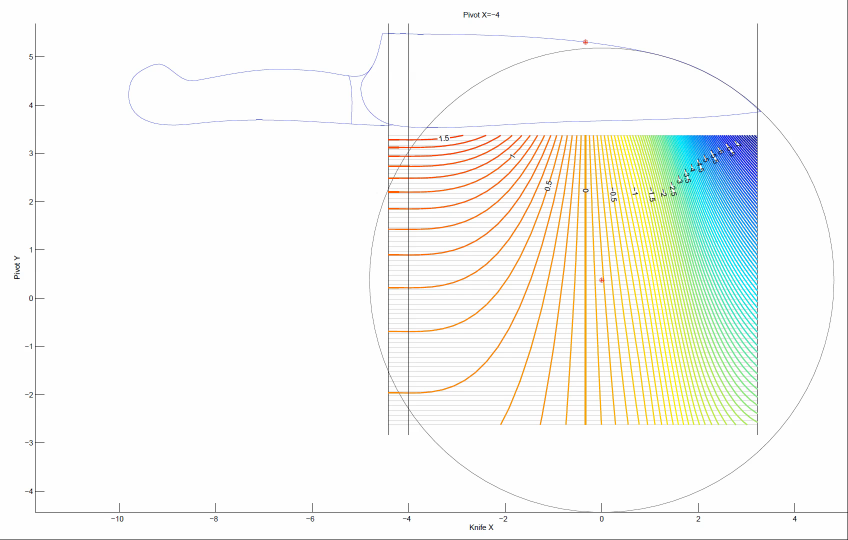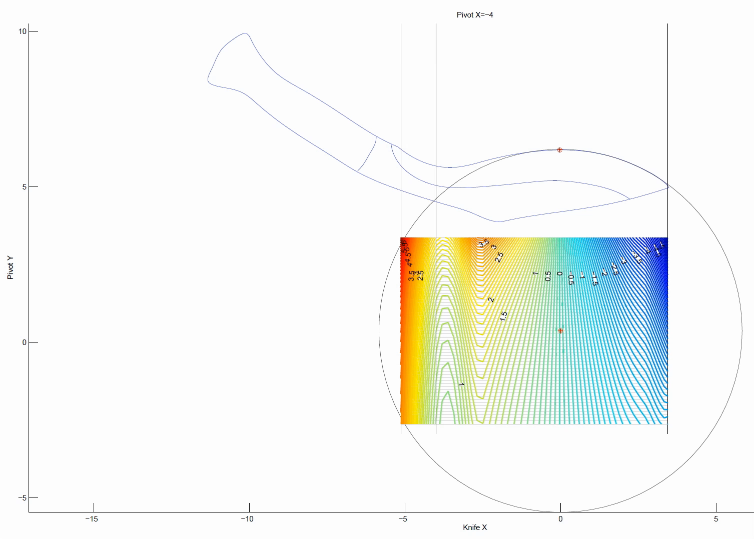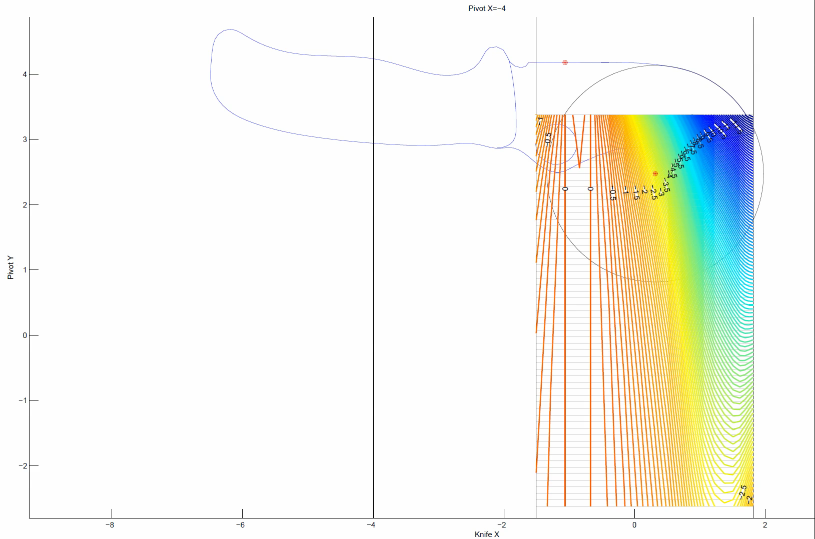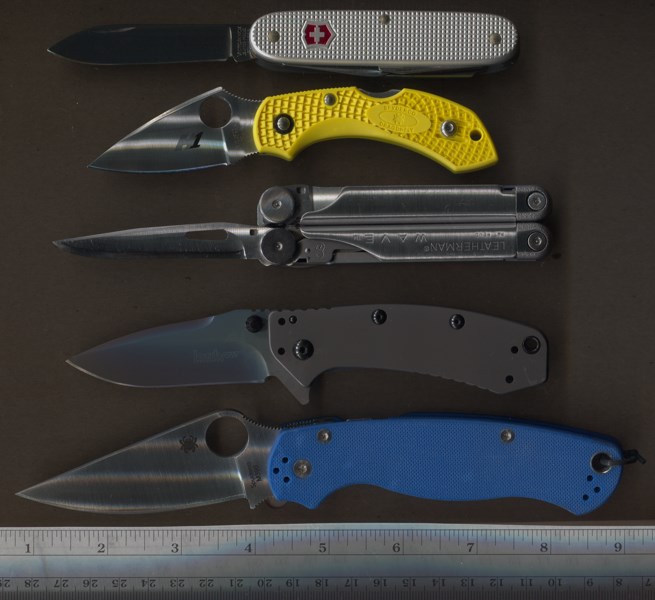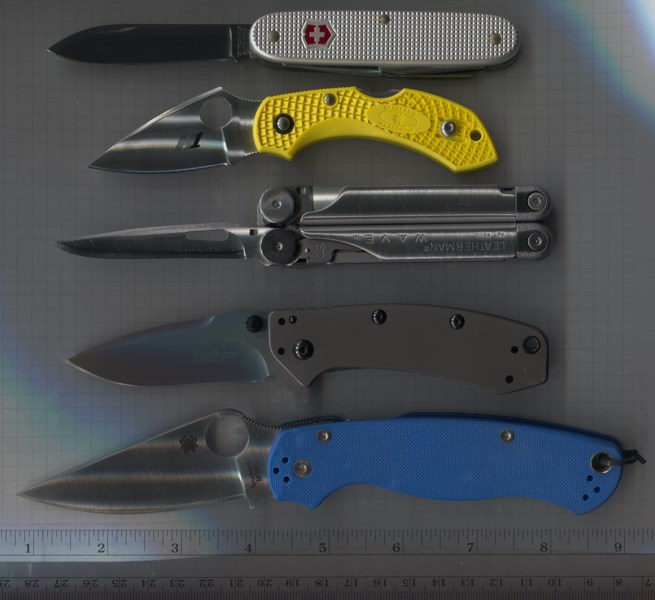I'm back from the holidays and had a chance to do some visualizations.
So, let me mention what kind of data we're trying to visualize:
Suppose we have a Chef's knife that we want to sharpen on a WEPS-Gen2. Where should we clamp the knife to minimize the variation in sharpening angle?
What we could do, is try lots of different clamping arrangements and see how each one varies the sharpening angle, and then somehow graph or plot all the results. So what does this data look like? To find out, let us go through an example in full detail.
-------------------------------------------------------------------------
For those of you who are TL;DR, just skip to the bottom of this post to see the visualizations without any explanation. If that seems sufficiently interesting, then you can come back to read the explanations below.
-------------------------------------------------------------------------
So, say I want to sharpen the chefs knife at 15 degrees per side. I'll pick a point on the knife edge that I want to be exactly 15 deg per side; this point is our _calibration point_ on the knife edge. Next, I need to try many different positions for the spherical joint in the WEPS-Gen2. I can specify the position by (x,y) coordinates where (x,y) are coordinates in the plane of the knife. The z-coordinate is perpendicular to the plane of the knife, and it is adjusted until we get 15 deg per side exactly at our calibration point. Now our knife and WEPS-Gen2 are fully set up. Finally, we get a sharpening angle for each point along the knife edge.
Given the above, we have the following:
Let x = x-coordinate of the spherical joint.
Let y = y-coordinate of the spherical joint.
Let x_knife = x-coordinate of a point on the knife edge.
Let f = sharpening angle (degrees per side) at some specific point.
So our data looks like this:
f(x,y,x_knife) = sharpening angle on the knife edge at point x_knife, when the spherical pivot is at (x,y), and z is adjusted to sharpen at 15 deg per side at our calibration point.
-------------------------------------------------------------------------
Now we have a problem: How to visualize f(x,y,x_knife)? To fully plot this, I need three inputs and one output, which would be... four dimensions. Sadly, we only live in 3 spatial dimensions, so I can't do that. In fact, I only have a computer-screen which is 2 dimensions. So how to go from 4 dimensions down to 2?
I'll try to solve this with two techniques:
(1) I'll use a contour plot.
(2) I'll use animated video so that I can use "time" as an extra dimension.
Suppose I fix the x-coordinate of the spherical joint. Then I now have a function f(y,x_knife). This would require 3 dimensions to plot. However, I can use just 2 dimensions if I use a contour plot. You may be familiar with contour plots from topographical maps.
https://en.wikipedia.org/wiki/Topographic_map
-------------------------------------------------------------------------
In a contour plot (topographic map), each contour line represents a specific height. It is kind of like having an enormous layer cake where each layer is evenly spaced. We then carve away the cake to form our mountains, valleys, and landscape. Each contour line is just a layer of icing.

We then view everything from the top. Where the lines are closely spaced, the landscape is very steep (we cross many cake layers in a short distance). Where the lines are very widely spaced, the landscape is flat (we have to travel a long way before we get to the next layer).
-------------------------------------------------------------------------
So, if we fix the x-coordinate, we get that the sharpening angle is f(y,x_knife), which we can plot as a contour map. Here's an example for our chefs knife. Don't worry; I'll explain what this picture means.
Let me explain all the different parts of this picture. First of all, you can see the silhouette of the chefs knife. The red point on the knife edge is our calibration point: the sharpening angle at this point will always be exactly 15 degrees per side. Suppose we want to try placing our spherical joint at coordinates x=-2.4 and y=-1. So, we first fix x=-2.4 which is represented by the black vertical line in the middle. Next we move along this vertical line until we get to y=-1. This is how we set the (x,y) position of the spherical joint of the WEPS-Gen2.
But how do we read off the sharpening angle? This is where the contour map comes in. Each of the horizontal gray lines represents a foot-path through our "landscape." From the point (x=-2.4,y=-1) in the figure, you can travel horizontally (left or right) along one of these gray lines. Each time you cross a contour, your sharpening angle has changed by 0.1 deg per side. As you walk along this gray line, your vertical altitude represents the sharpening angle for the point on the knife with the same x-coordinate (on the page, draw a vertical line until it touches the knife edge).
So in our example above, we see lots of widely spaced contours near the heel of the knife. So with our pivot at (x=-2.4,y=-1), the sharpening angle near the heel is almost constant. However near the tip of the knife, the contours get very close together! So the sharpening angle changes a lot here. So how much does the sharpening angle vary? You can find out by counting how many contours you cross as you walk along the gray line. Each time you cross a contour line, your sharpening angle (ie: "altitude") has changed by 0.1 deg per side.
-------------------------------------------------------------------------
A few additional notes: The landscape I plotted has "sea level" set to at 15 degrees per side. So the contour labeled "0" means no deviation from our target of 15 deg per side. The contours labeled "0.5" means we have increased the sharpening angle by 0.5 degrees per side, so we would be at 15+0.5 = 15.5 degrees per side. Similarly for the -0.5 contour, and so on.
Please ignore the colors in the contour plot. I'm thinking about what a good color scheme should be and learning how to set the colors in Matlab. But for now, I'm just using Matlab's default colors, which do not mean anything in this plot. I kept the colors because they are still useful for seeing the direction of contours when they get very dense.
-------------------------------------------------------------------------
Okay, so we get a specific "landscape" and the horizontal gray lines are our "foot paths". And we can walk along the foot-paths and see how many contours we cross to see how the sharpening angle varies. But this landscape was only for a specific value of x, our choice of x-coordinate for the spherical joint! We want to try many different x-coordinates for the spherical joint.
So this is where I use the technique of an animated video. I made many landscapes: one for each position of x-coordinate for the spherical joint. Each frame uses a vertical black line (the one that is moving) to represent the x-coordinate of the spherical pivot.
-------------------------------------------------------------------------
So let's work out a specific example. Do you see the red dot marked in the landscape? Suppose we want to put our spherical joint there. What we do, is go to the frame of the animation where the vertical black line goes through that point. Here is that frame.
Next, the red point is on a horizontal gray line. We can walk left-and-right along the gray line. Each time we cross a contour, our sharpening angle has changed by 0.1 deg per side.
In this example, we have placed the spherical joint at the position of the red dot. When we do this, the sharpening angle near the tip of the knife is almost constant. That is, as we walk to the right along the gray line, we cross very few contour lines. We cross one, maybe two lines, which means a change of 0.2 deg per side. However, near the heel of the knife on the left, we cross many contour lines. From the plot, we can see that the sharpening angle decreases as we cross 7 contours. So our sharpening angle decreases by 0.7 deg per side.
Finally, notice the vertical contour below the calibration point. Of course this must be there! This is because we have adjusted the WEPS-Gen2 to sharpen at 15 degrees per side for every choice of (x,y) position of the spherical joint. So we will always have a vertical contour line below the calibration point, and it will have an "altitude" of zero degrees per side. That means, zero degrees per side deviation from our target angle (which is 15 deg per side).
-------------------------------------------------------------------------
So what are we looking for? We want to search all the frames for a horizontal gray line which crosses as few contours as possible, and which is also the closest to "sea level" as possible.
-------------------------------------------------------------------------
If you understood all that, congrats! Sorry if it is so complicated.

I'm rather unsatisfied with this visualization, but it is the best I can come up with for now.
Okay, if you worked through all of that, then you deserve to see the animated videos of the contours! Here they are. I will list them twice. First is a download link to a .mp4 file. This way, you can download the video, and step through it frame-by-frame with your favorite video program (Apple Quicktime, Microsoft Media player, etc.). If you don't want to do that, you can just watch the YouTube link instead, but YouTube does not allow you to navigate frame-by-frame.
-------------------------------------------------------------------------
Chefs Knife
Coordinates are in inches.
Target sharpening angle = 15 degrees per side at the calibration point.
Contour lines every 0.1 degrees per side.
Sharpener is a WEPS-Gen2
Download:
https://drive.google.com/file/d/0B8rQYhU8N9ZGSmNzNGdlWFZhXzg/
YouTube:
https://www.youtube.com/watch?v=3x6GJQkmiJs
Preview Image:
-------------------------------------------------------------------------
Khukuri Knife
Coordinates are in inches.
Target sharpening angle = 10 degrees per side at the calibration point.
Contour lines every 0.1 degrees per side.
Sharpener is a WEPS-Gen2
Notes: The contour plot goes a bit crazy in the upper left corner. Please ignore these artifacts; these are caused by my software which treats +90 degrees as "the same as" -90 degrees. So when the sharpening angle goes to 90 deg per side, it can rapidly flip between +90 and -90 in the plot, which causes Matlab to draw fairly crazy contours.
Download:
https://drive.google.com/file/d/0B8rQYhU8N9ZGVXpQN2lnUjlQd1U/
YouTube:
https://www.youtube.com/watch?v=9EZndXsGyso&feature=youtu.be
Preview Image:
-------------------------------------------------------------------------
Spyderco LionSpy
Coordinates are in inches.
Target sharpening angle = 15 degrees per side at the calibration point.
Contour lines every 0.1 degrees per side.
Sharpener is a WEPS-Gen2
Download:
https://drive.google.com/file/d/0B8rQYhU8N9ZGc3Z0WUlGcV9IZ0U/
YouTube:
https://www.youtube.com/watch?v=Z8-Jh80wzU4&feature=youtu.be
Preview Image:
-------------------------------------------------------------------------
That's all I have for now. If any of you can imagine or know of a better way to visualize the data, please let us know.
Sincerely,
--Lagrangian
